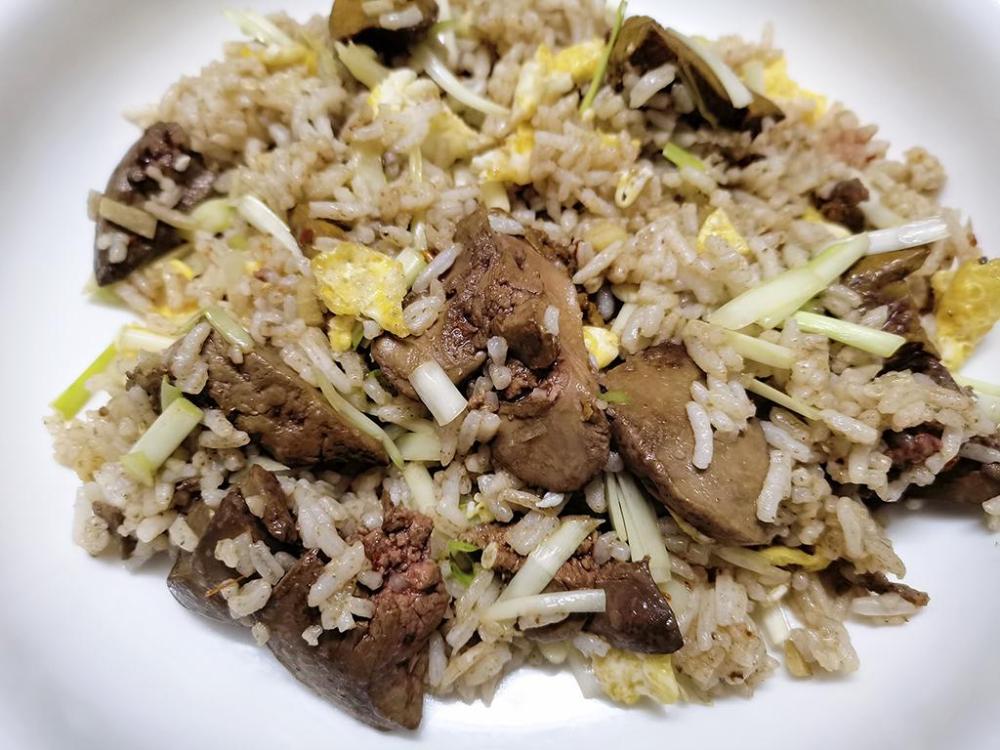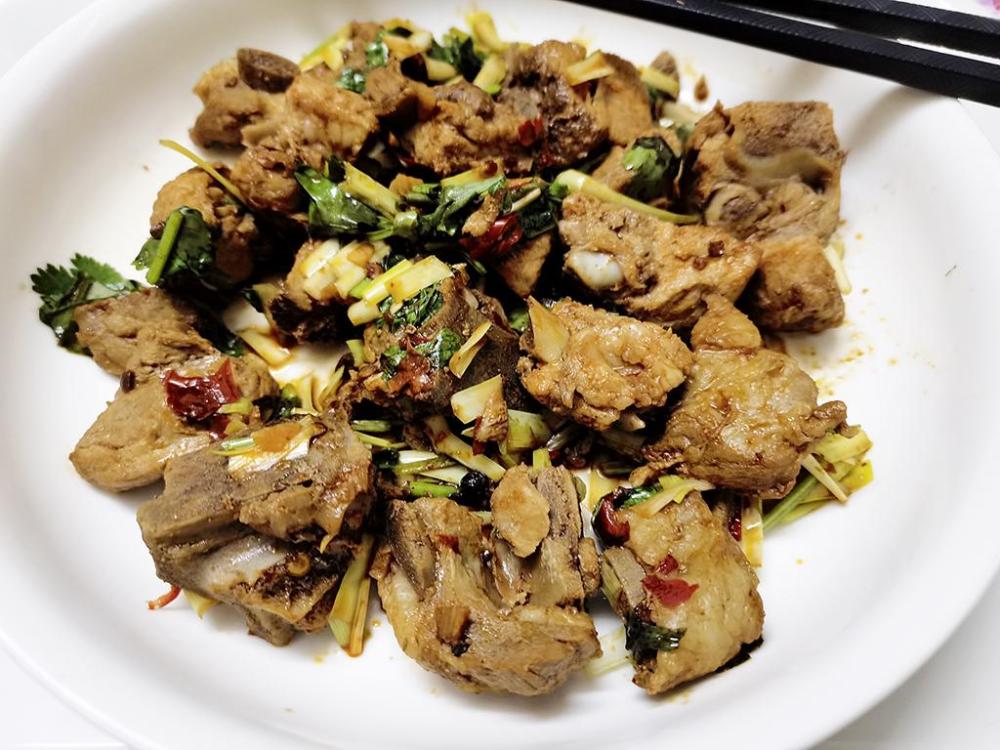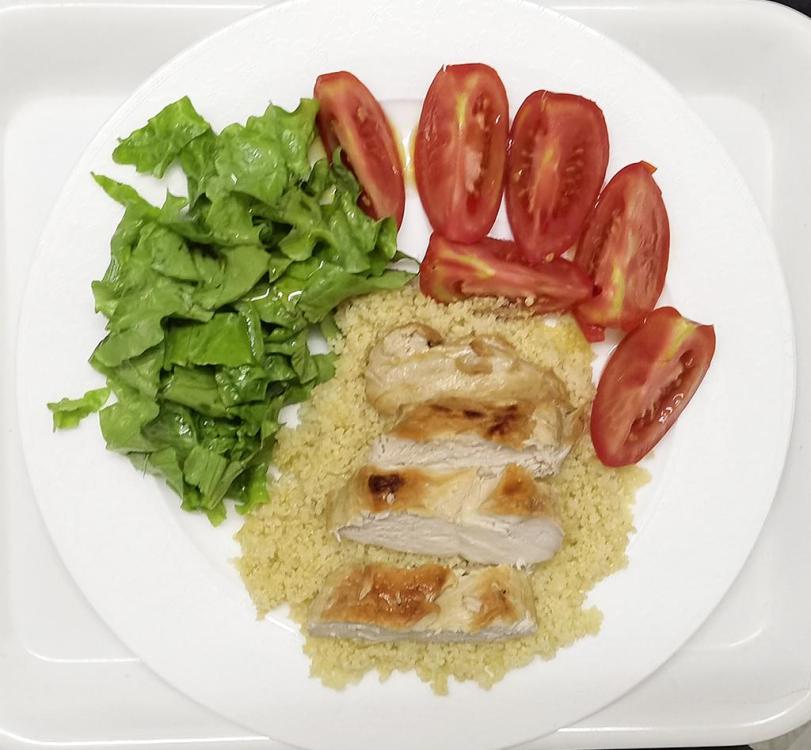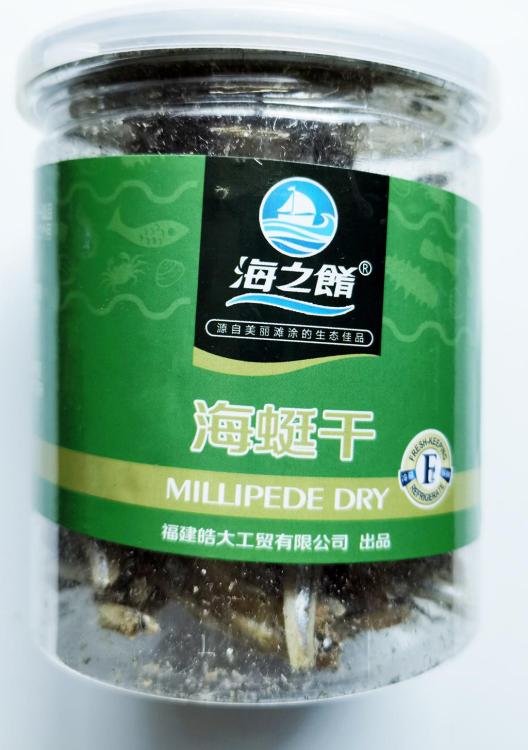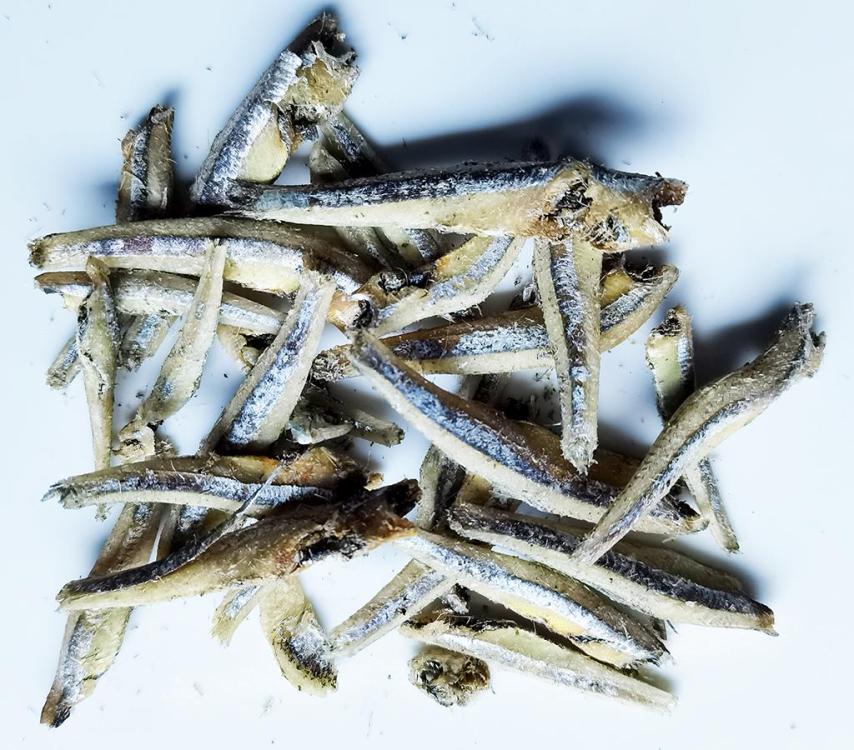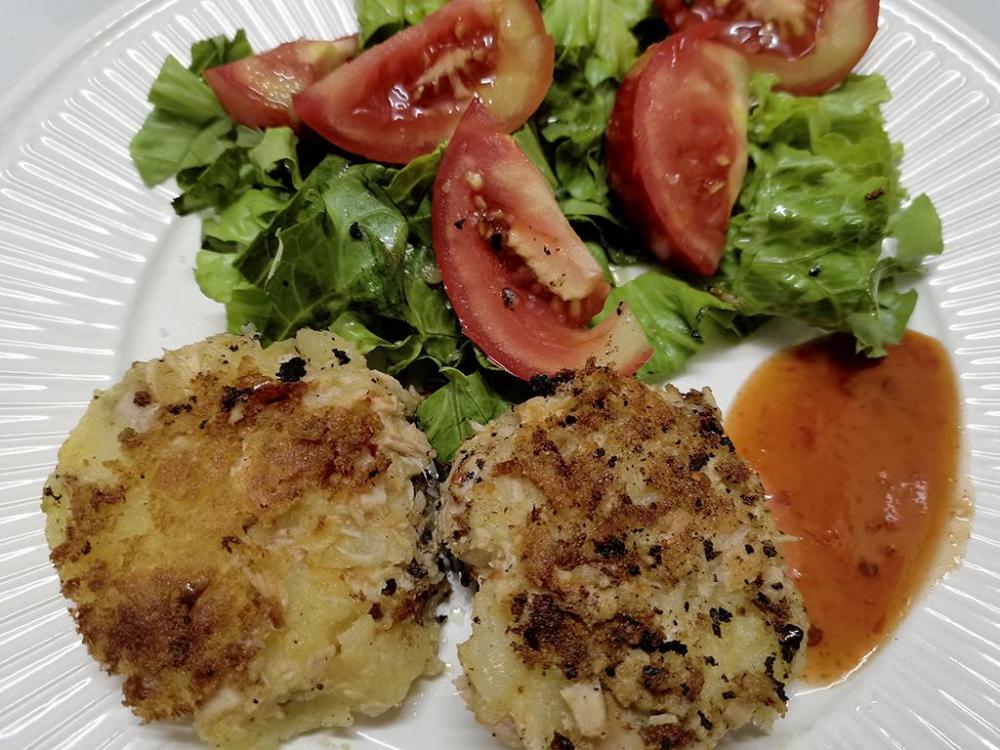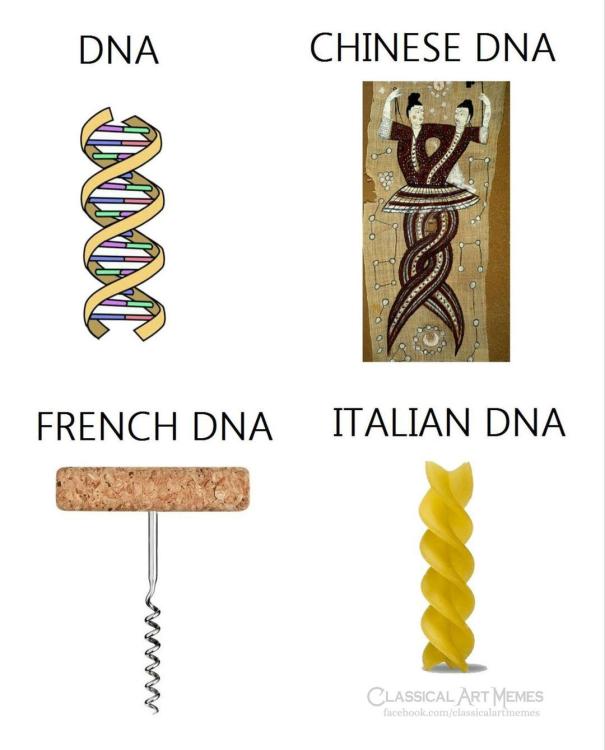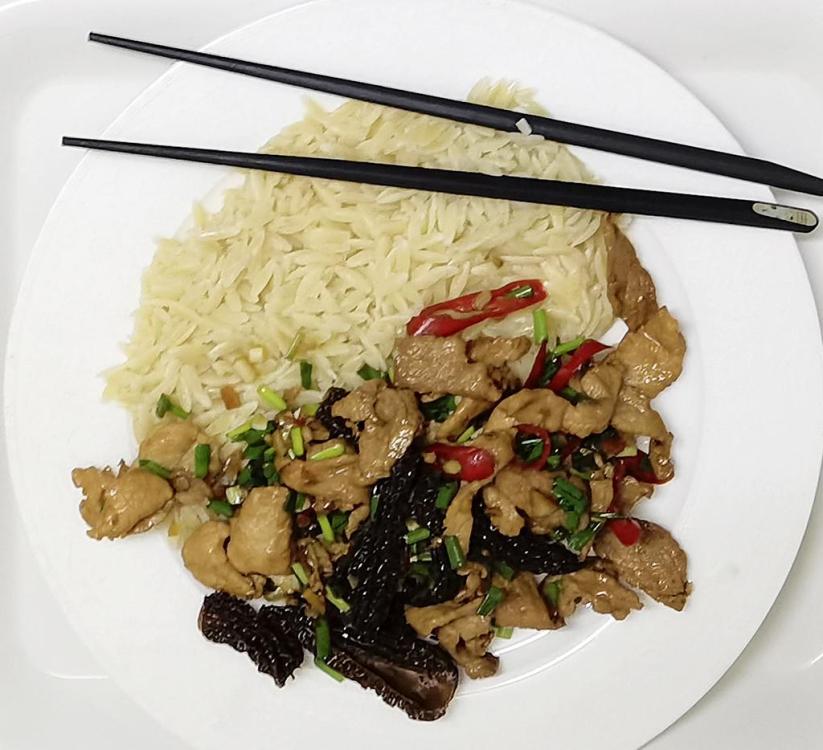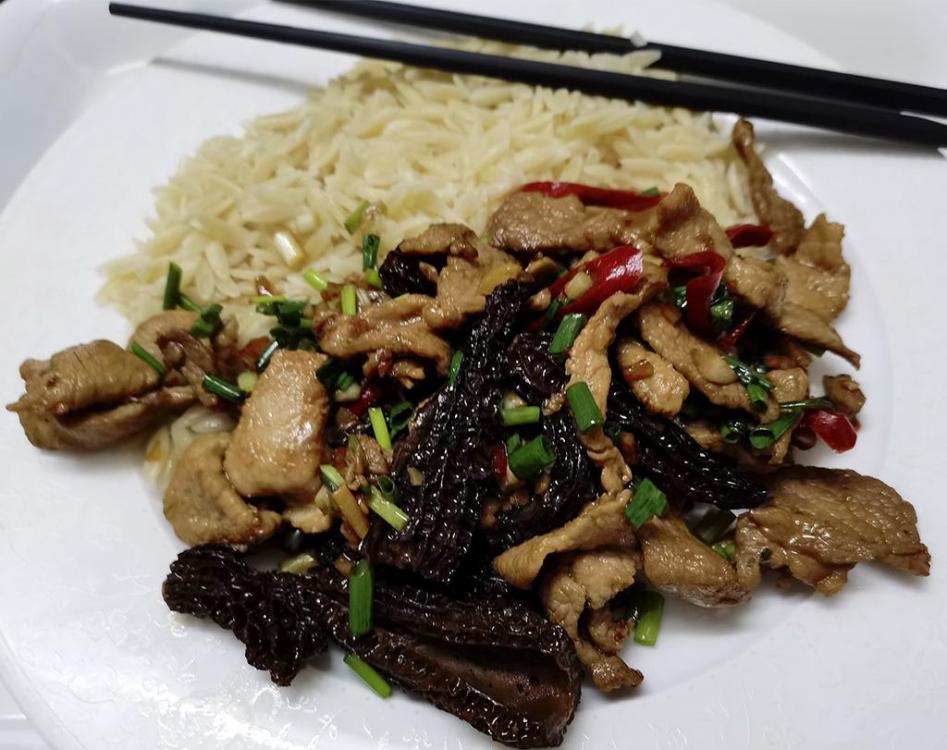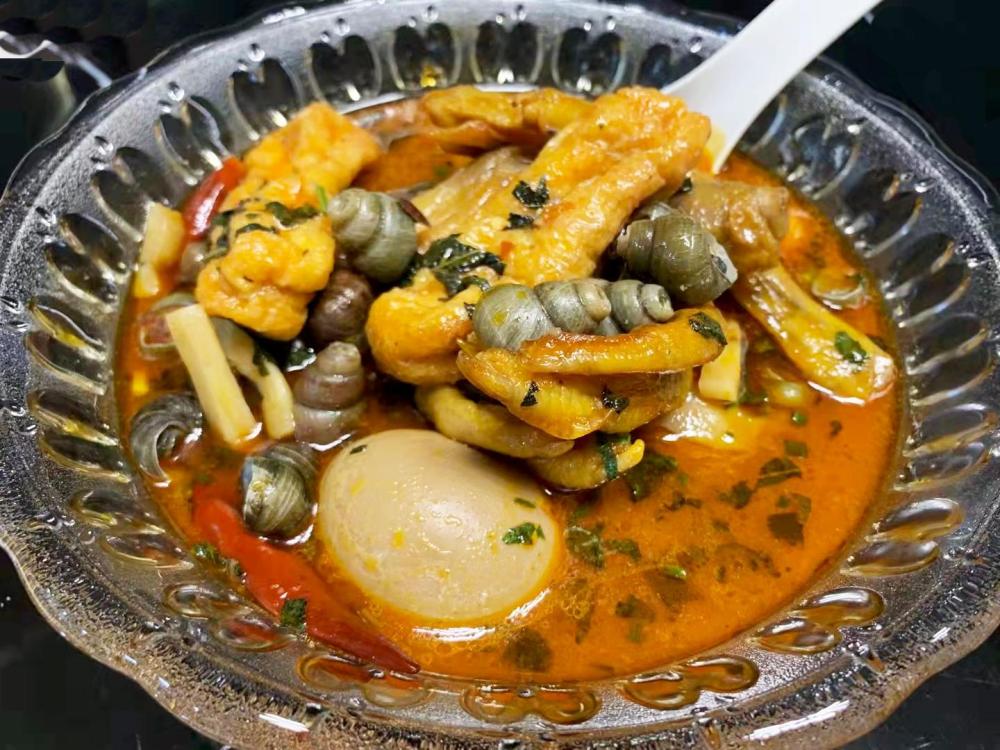-
Posts
16,658 -
Joined
-
Last visited
Content Type
Profiles
Forums
Store
Help Articles
Everything posted by liuzhou
-
This is what I call a couldn't face the struggle to go shopping with one hand and a crippled leg meal. My friend J who has been helping me was unavailable. So it's a freezer and leftover show. Chicken liver fried rice with egg, garlic, ginger, chili, hothouse chives, Shaoxing wine and leftover rice from yesterday (deliberately cooked to have for today). It was OK.
-
Not the easiest thing I've ever done, but I got there! Being stubborn sometime pays off!
-
A second one-hand dinner. It may look more involved but the butcher did 99% of the cutting. Sichuan style pork ribs with garlic, ginger, chilli, fresh green Sichuan peppercorns, hothouse chives, coriander leaf, soy sauce and doubanjiang. The ribs were slow stewed for about 45 minutes before being stir fried with the listed ingredients. Served with rice and stir fried water spinach.
-
The Lord Sandwich story is probably mythical, though. John Montagu, 4th Earl of Sandwich certainly existed, but the only evidence was supplied a man named Grosley who came up with the attribution, claiming in 1770 to have witnessed Montagu ordering a dish of beef between two slices of bread in London during a 24 hour card game session. Unfortunately for the tale, Grosely didn't arrive in London until 1765, but the word was in use earlier than his arrival or his publication of the tale. Also if such an event even happened, Grosely was unlikely to have been there. The bread sandwich is far more likely to have been named after the town in Kent, England and was used as a descriptor for many things originating there, strretching back to the 15th century. Food served on bread goes back even further.
-
Debrett's is a style guide for the brainless inbred aristocracy. Of course we bite bread. How the f*** else can anyone consume it? It has been online for years. Also, popular with idiots who don't realise Downton Abbey was fictional.
-
Yes, but paper woks don't work so well!
-
Now, I'm just wondering who is going to do the washing up!
-
Yeah, but he still cooks it with the skewers in. I very much doubt that even if he pulled them out it would make much difference, but if the skewers are still place, there are no holes! Just meat with bits of wood in it.
-
Yeah! I thought that was strange, but not the only strange thing.
-
No. I sandwiched it between four cans of beans to hold it steady. Luckily my knives are sharp. I should have taken a photo, but I would have needed yet another hand!
-
Following an accident in which I broke my wrist, I am reduced to having one functional hand. But I'm stubborn and insisted on cooking tonight. Definitely the best one-handed dinner I've ever made. Well, the only one really. 1-10-10 chicken with couscous and a lettuce and tomato salad. The hardest part was cutting the cooked chicken and the tomatoes.
-
When breading with panko, I always dry the meat, as suggested above. Then eggwash and into the panko, pressing the crumbs in. Refrigerate for a bit, then repeat the egg and panko and another short refrigeration. It may seem you would get too thick a crust, but maybe that's just the way I like it. I don't consider it too thick. It looks like the coating in @Duvel's video link.
-
I was well into my late 20s before I ate salmon that wasn't from a can. My mother thought it was some sort of exclusive gourmet food. I almost thought the fish lived in cans, despite living very near some of the best wild salmon fishing rivers in the world. They belong to the the Queen and were not the place for scum like me. Still aren't. The first time I ate non-canned salmon was in a London restaurant and I remember thinking "That's not salmon! Nothing like salmon." I'm a bit past my 20s now and still think salmon is overrated. The only time I eat it now is as shashimi or sushi but still not my favourite. I can't remember the last time I ate canned salmon. I thought "salmon manufacturers" were other salmon! 🤣
-
These arrived this morning, Great fun for freaking people out! Millipedes! Except, they aren't millipedes at all! They are a type of small fish in the anchovy family and similar in usage. Great unami.
-
I microwave beets here and haver never had colour loss. I have also roasted, which is my preference, but no oven here.
-
I agree with the previous two posts. The best way to season a wok is to use it. And don't worry about your gas ring not being hot enough. 1.4 billion home cooks in China manage just fine with a silmilar set up to yours. See here.
-
As I mentioned here some time back, I have always struggled with fishcakes, but today, for boring reasons I won't trouble you with, I was unable to get out shopping, so made do with pantry staples. So, this is my latest attempt. Definitely an improvement, if not perfect. Canned tuna with chilli and Vietnamese fish sauce. Spud. No egg. Served with a simple lettuce and tomato salad dressed with olive oil and lime juice. Sriracha dip. They didn't fall apart! Held themselves together! Wow! And tasted much better than they look. Two more were eaten.
-
Yes, they do taste somewhat of cucumber. After all, they are part of the cucumber family, as are all melons. In fact, Mandarin Chinese doesn't differentiate between melons, squashes, cucumbers etc. - they are all some kind of 瓜 (guā ). That said, any time I've had these melons, I've more noticed a banana-like flavour. They also have a slight citrus flavour. Try lightly salting them; that brings out the flavours more.
-
Pork marinated with garlic, ginger, chilli and Shaoxing wine. Sir-fried with morels and finished with soy sauce and Chinese chives.
-
My dear friend J's son attempting the chopstick challenge.
-
鸭脚螺蛳煲 (yā jiǎo luó sī bāo) - Spicy duck's feet with sea snails and a salted duck egg. In a local hole in the wall restaurant.
-
Have you read the Kitchen Scale Manifesto? Link below.
-
Back in the late 1960s, in Scotland, although there were a few "Indian" restaurants around, most of the required ingredients were not available to the home cook. Nor were there many, if any, cookbooks aimed at home cooks. Then around 1970, an "Indian" market opened in Glasgow near where I was living. On the same street as me. I investigated but could hardly recognise anything and everything was labelled in Hindi, sometimes with romanised tranliterations. What the hell was "methi", "dhaniya", "jeera", "haldi" etc⁈. And why didn't they have any curry powder? I gave up. As I was leaving, I spotted a pile of little yellow books on a shelf. More like booklets. Who knows why, but I picked one up. It was a badly typeset recipe book apparently written in what the author thought was English. I bought one. It cost almost nothing. I went home and forgot about it until weeks later when I came across it while looking for something else. I began to read it. Seemed a bit strange but I could understand it. I got to the last page and there found a list of all those unknown Hindi names with English equivalents. So, I tried some of the more promising recipes, meticulously following the instructions.The results were awful. Over watery, bland and barely edible. I checked the recipes over and over to see if I had overlooked anything, but it seemed not. A couple of years later, I went to India for just over a year. There, I found that a lot of the food I was served in small restaurants was just like those awful recipes. I have to say the worst Indian food I have ever eaten was in India! Roll on ten years and I returned to India for a shorter visit. I braced myself for culinary hell, but things had improved immensely. I still got a few bum deals, but they were now the exception. And back home, more and more "Indian" restaurants and markets appeared. Then a trickle of proper recipe books turned into a flood. The first I bought after the yellow disaster was Madhur Jaffrey's 1973 debut publication, An Invitation to Indian Cooking (eG-friendly Amazon.com link). I still have it. First edition. It's in London, though. No idea what happened to the yellow peril, though.



